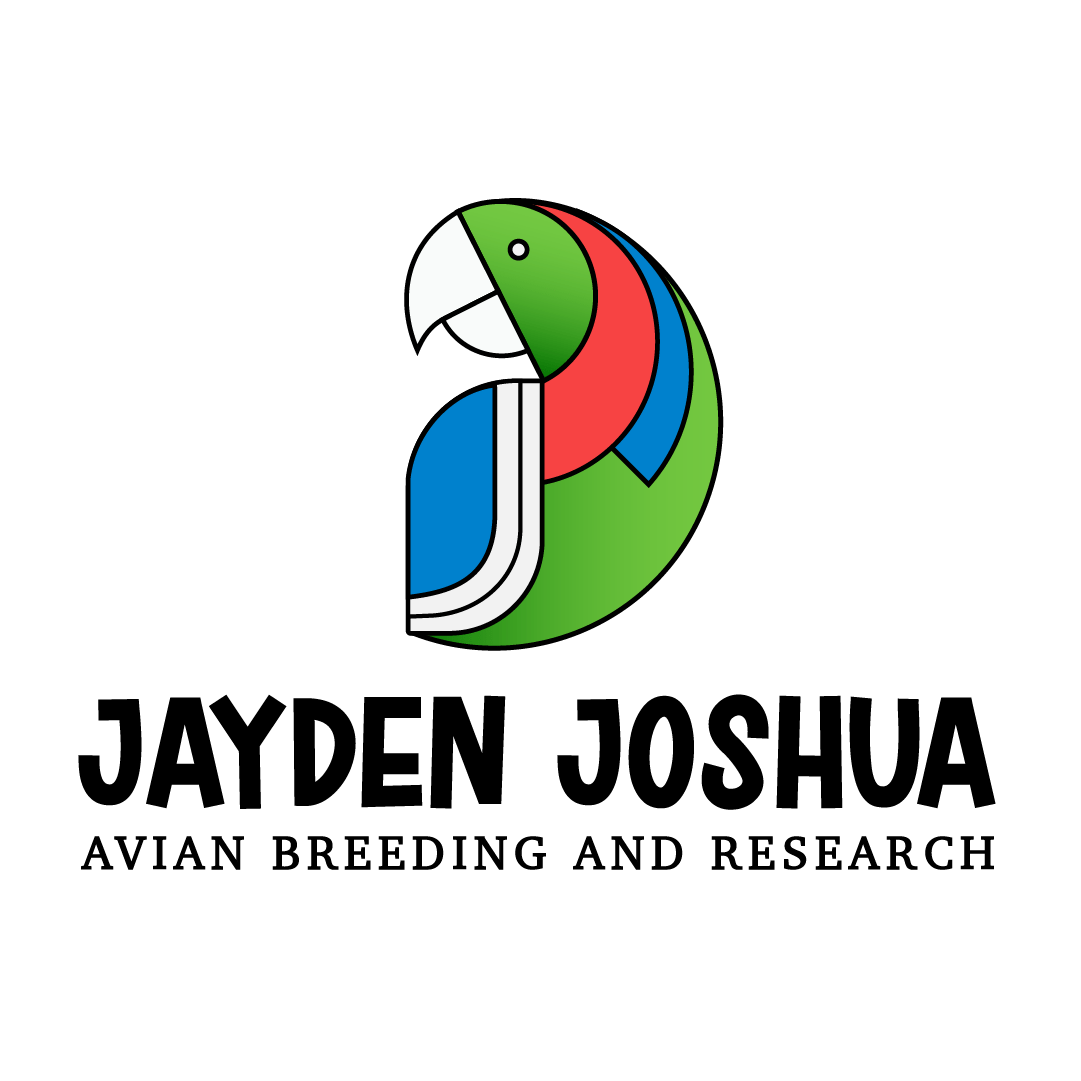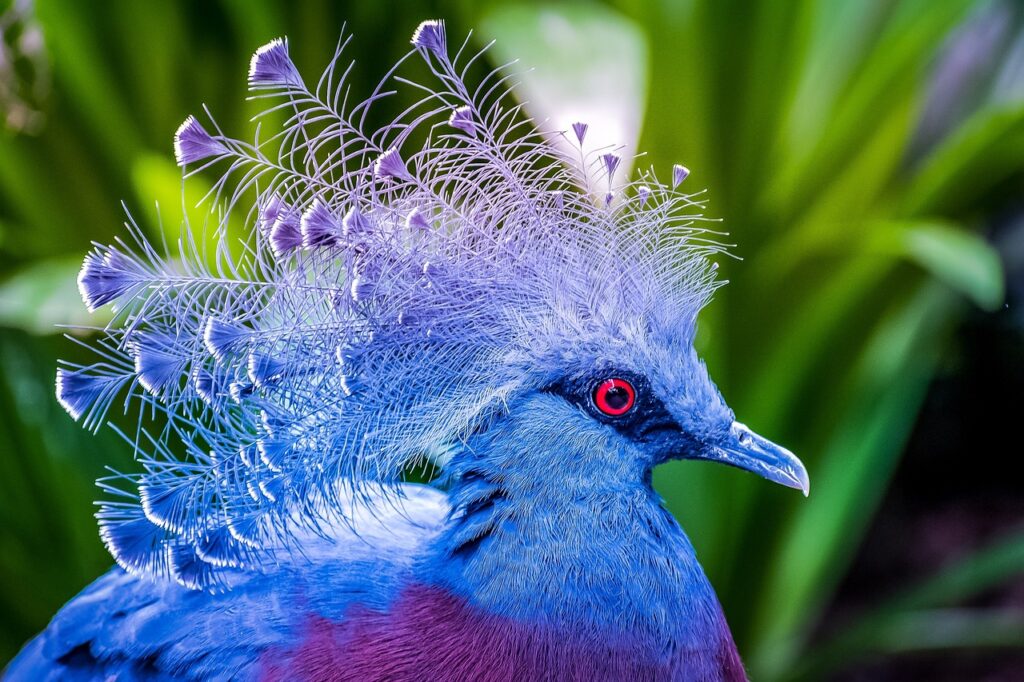
Discover the exquisite beauty of the Victoria Crowned Pigeon. Learn about its habitat, appearance, behaviour, and conservation status. Find out why this marvellous bird is an iconic symbol of New Guinea.Read More
All About Victoria Crowned Pigeon
The Victoria crowned pigeon (Goura victoria) is a truly magnificent bird, the largest living pigeon species, and the closest relative to the extinct dodo bird. They are native to the lowland swamp forests of New Guinea and are named after Queen Victoria in honor of her long reign. Here’s a closer look at these regal birds.
Appearance of Victoria Crowned Pigeon

- Largest Pigeon: They hold the title of the largest living pigeon species, reaching an impressive 75 cm (30 inches) in height and weighing up to 3.5 kg (7.7 lbs). Their wingspan can be truly enormous, stretching up to 2 meters (7 ft).
- Blue-grey Elegance: Their body feathers are a deep, majestic blue-grey with a powdery appearance.
- Maroon Chest Patch: They have a contrasting maroon patch on their chest, adding a touch of color.
- Striking Lace Crown: Undoubtedly their most distinctive feature is the elaborate lacy white crest adorning their heads. These elegant feathers are tipped with white, further enhancing their regal look.
- Subtle Sexual Dimorphism: There are no significant plumage differences between males and females. Males may be slightly larger than females, but the overall coloration is similar.
Behaviour of Victoria Crowned Pigeon
- Ground-dwelling: Unlike most pigeons that spend a considerable amount of time flying, Victoria crowned pigeons are primarily ground-dwelling birds. They walk or hop on the forest floor in search of food.
- Monogamous: They are monogamous birds, forming long-term pairs that stay together for breeding and raising chicks.
- Vocalizations: Their most common vocalization is a deep, booming call that can be heard long distances through the rainforest. They may also make quieter cooing sounds.
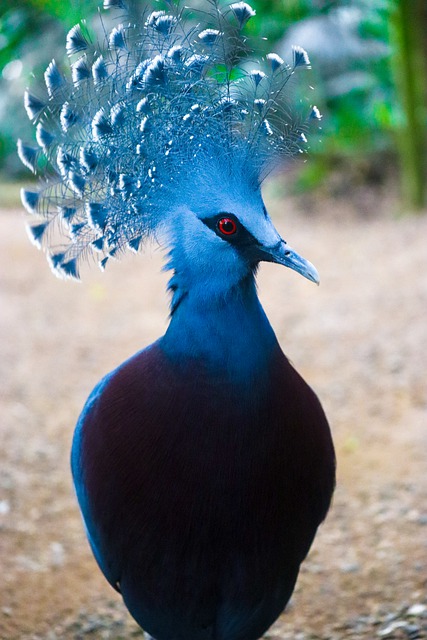
Habitat of Victoria Crowned Pigeon
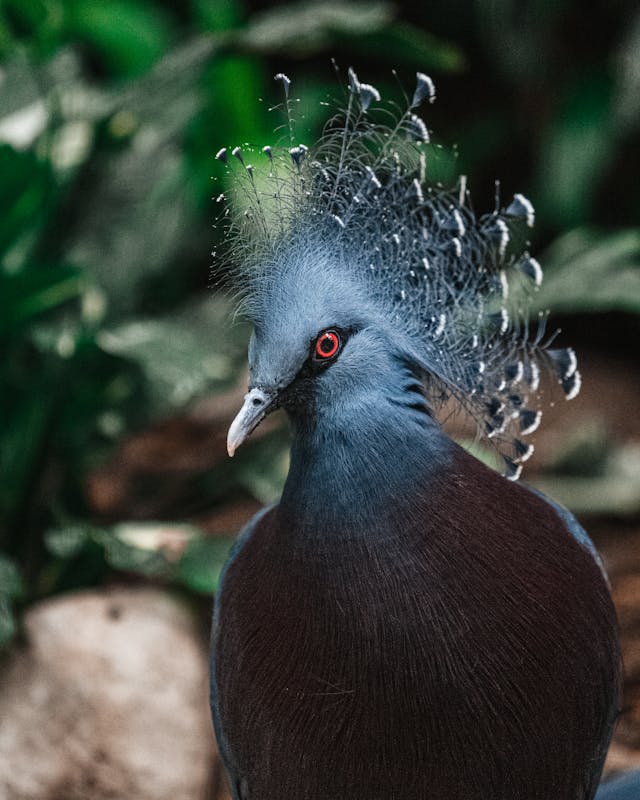
Lowland Rainforests: Victoria crowned pigeons are found in the lowland rainforest areas of New Guinea, Indonesia. They prefer areas with dense vegetation that provides them with cover and food sources.
Diet of Victoria Crowned Pigeon
The Victoria crowned pigeon is primarily a frugivore, meaning their diet consists mainly of fruits. Here’s a breakdown of their food sources:
A balanced diet rich in fruits, seeds, and other essential nutrients is crucial for the health and well-being of Victoria crowned pigeons. Fruits provide them with vitamins, sugars, and fiber, while seeds offer valuable fats and oils. Invertebrates and fungi can contribute additional protein and micronutrients.
Fruits:
- Fallen fruits are their primary source of sustenance. They forage on the forest floor for a variety of fruits that have dropped from the trees. These fruits can vary depending on the season and what’s available in their habitat.
In Captivity:
- When kept in zoos or sanctuaries, Victoria crowned pigeons are typically provided with a commercially prepared diet formulated to meet their nutritional needs. This diet often includes a mix of chopped fruits, vegetables, seeds, and pellets to ensure they receive all the necessary nutrients to thrive.

Conservation Status
- Vulnerable: Sadly, Victoria crowned pigeons are listed as “Vulnerable” by the IUCN (International Union for the Conservation of Nature). Habitat loss due to deforestation is the biggest threat they face.
- Hunting Threats: Although they are a protected species, hunting for their meat and feathers persists in some areas.
- Conservation Efforts: Fortunately, there are ongoing conservation programs working to protect their remaining habitats and raise awareness about their importance. Breeding programs in zoos are another crucial aspect of their conservation.
Want to learn more about Rosella’s? Check out our blog post!
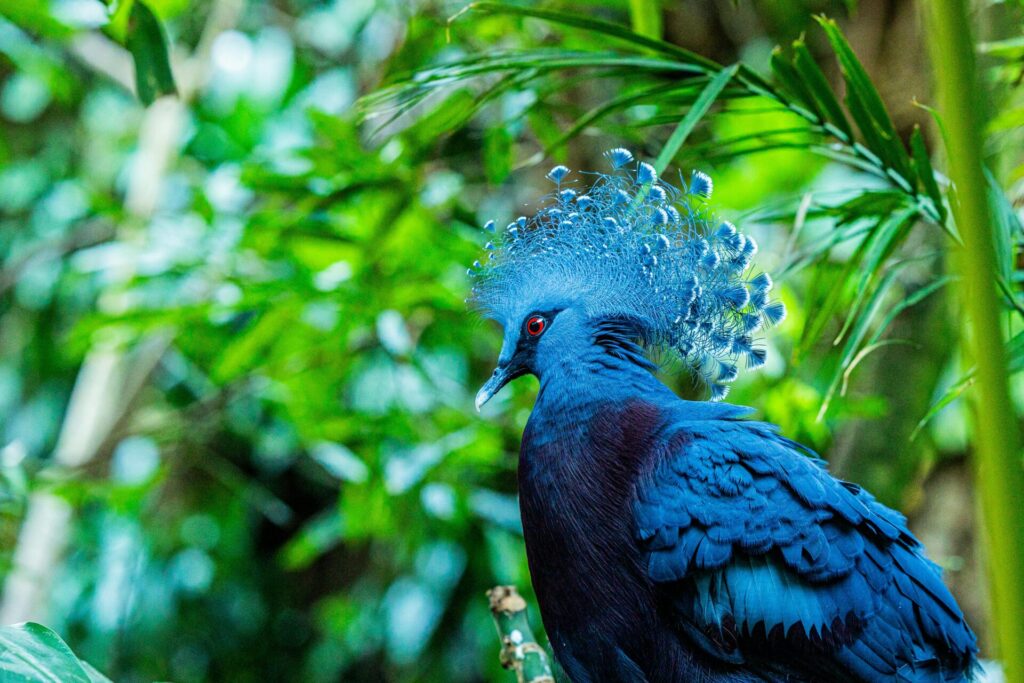
Subscribe to our newsletter!
